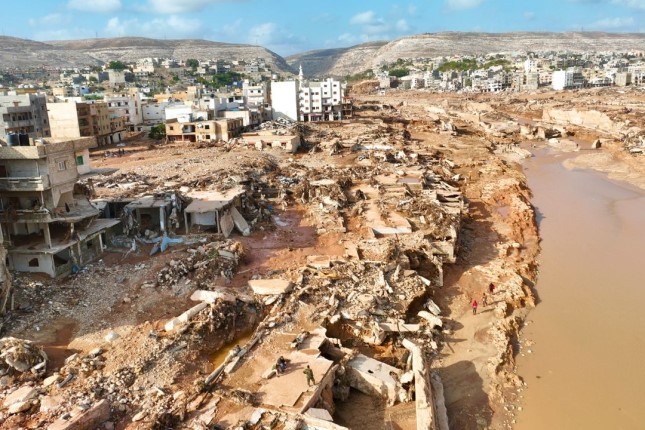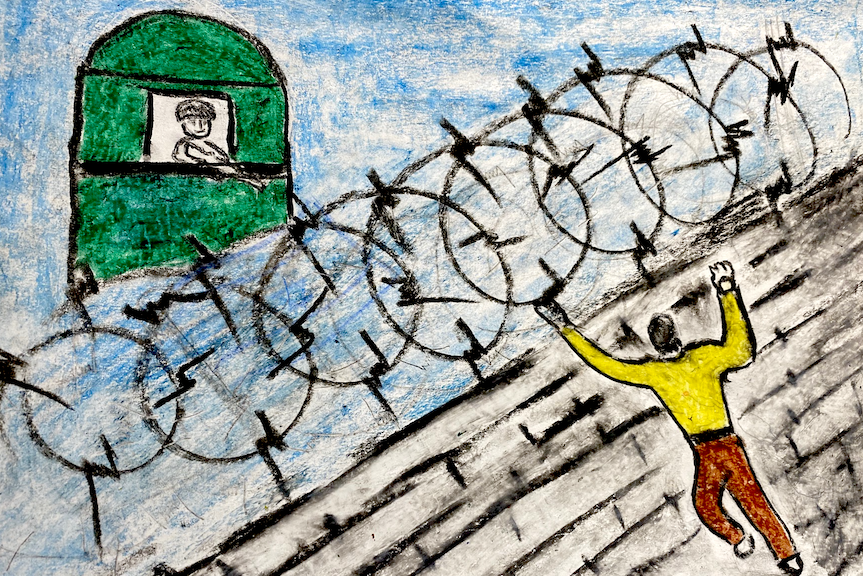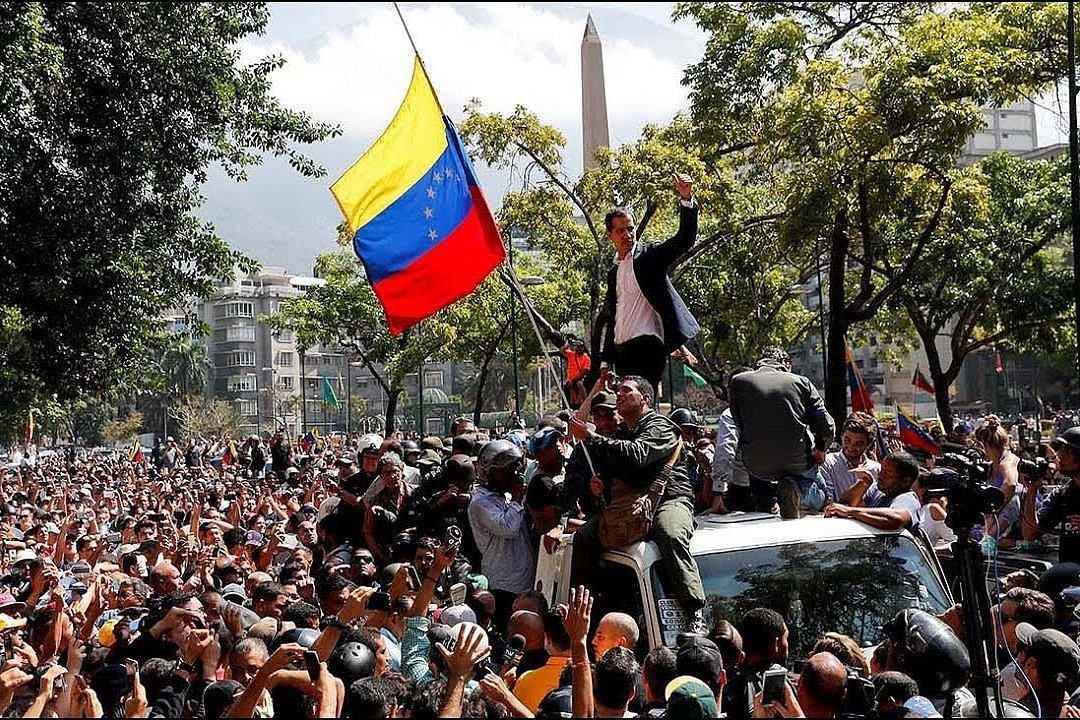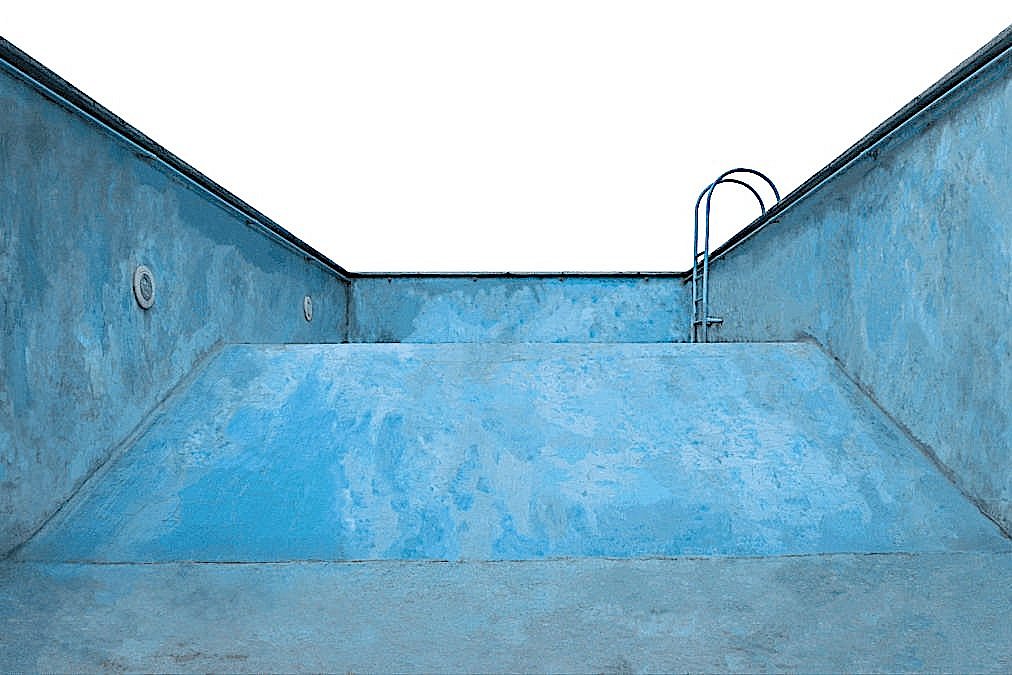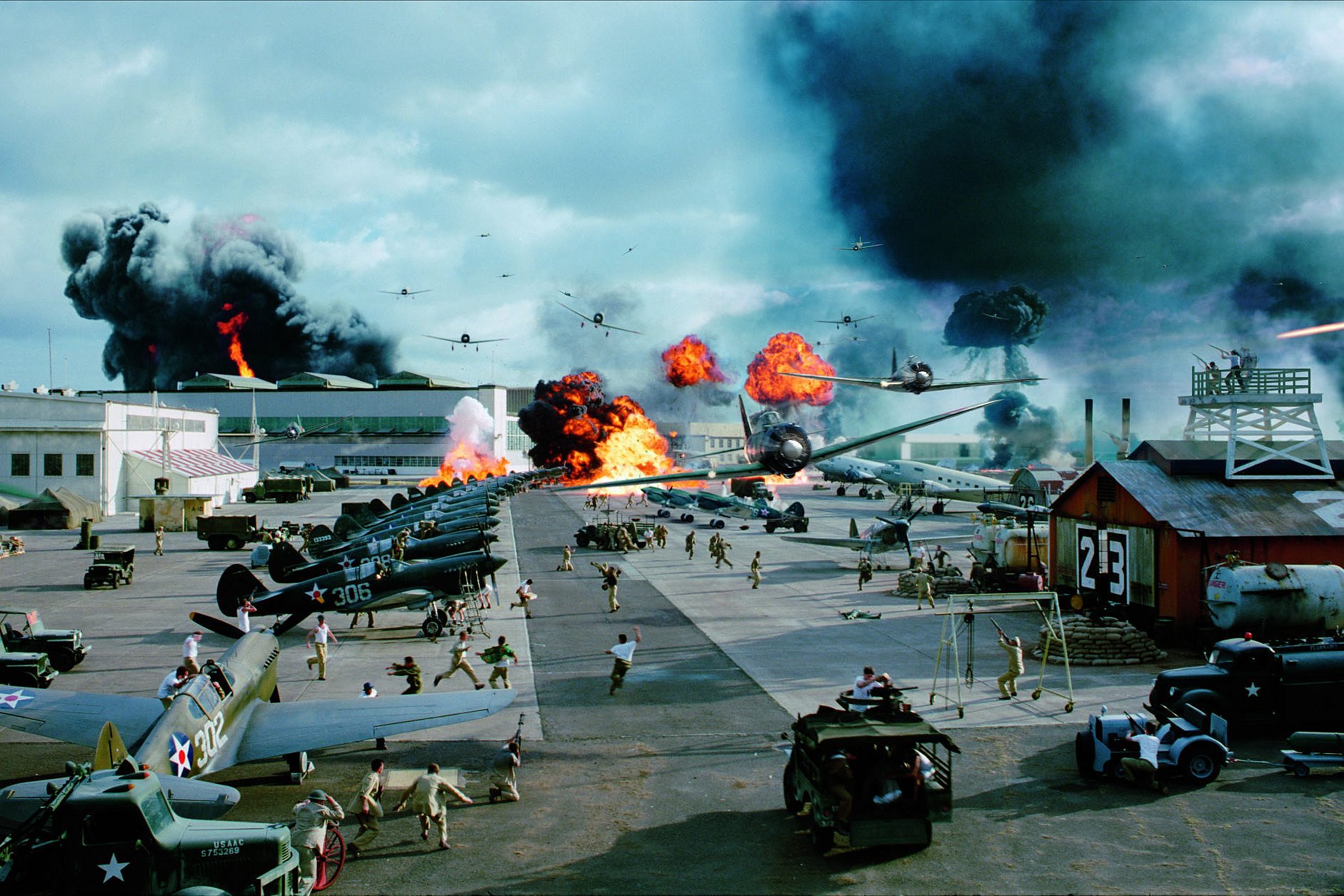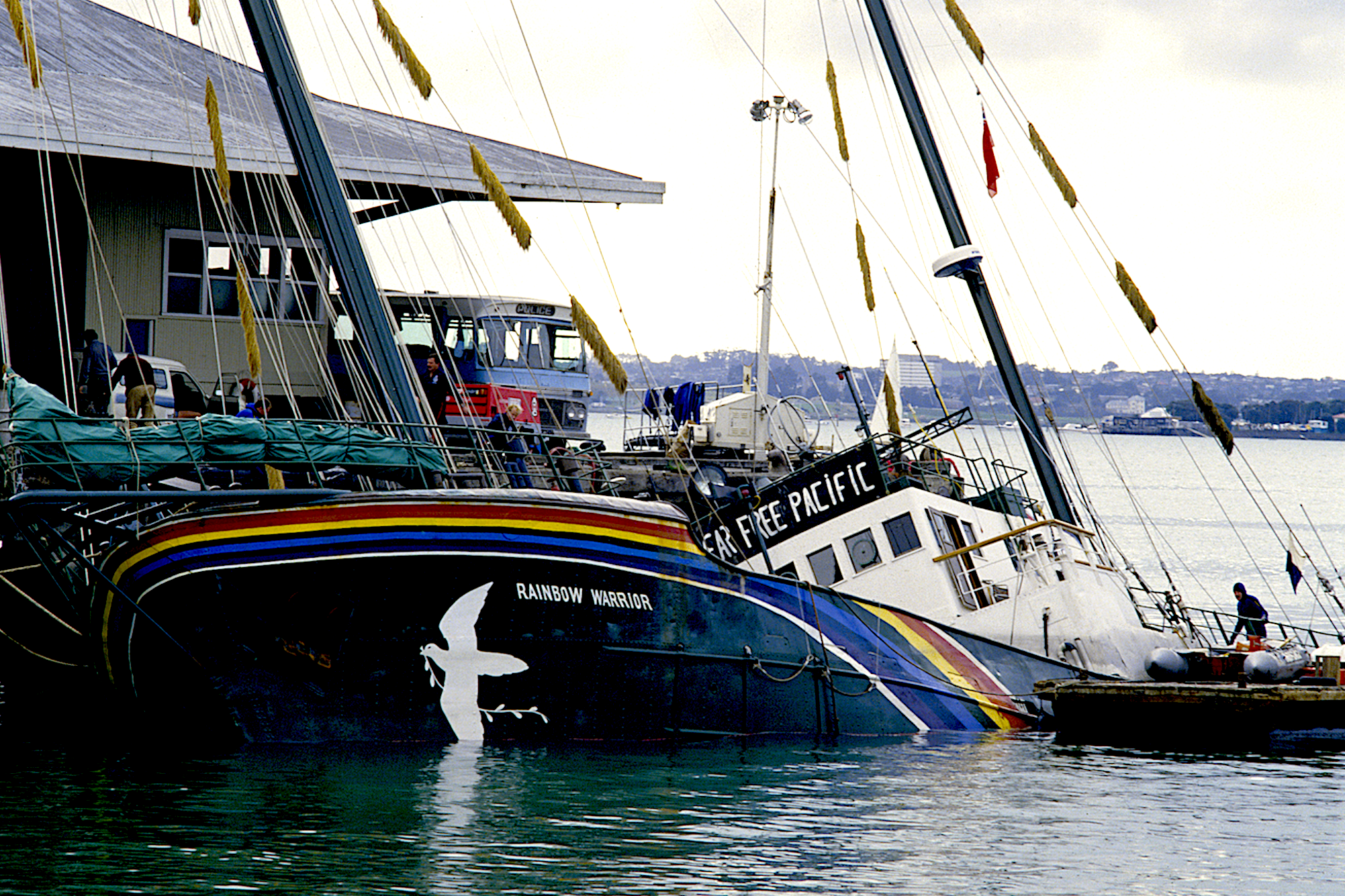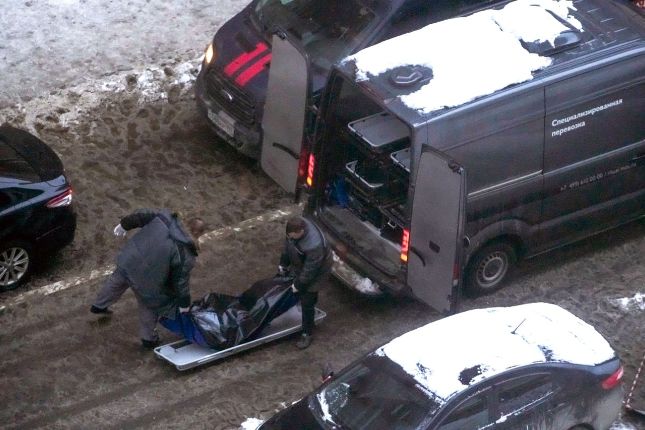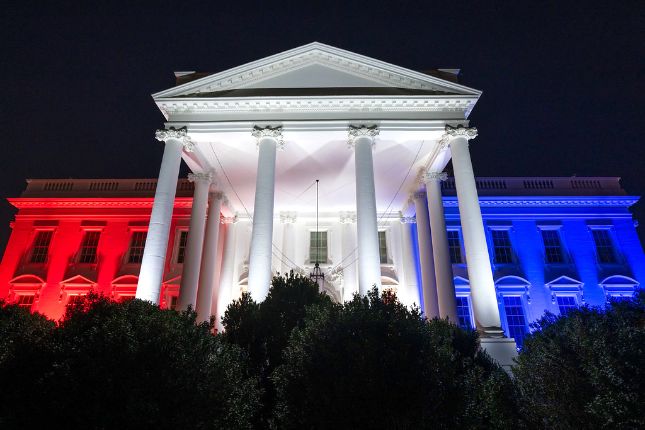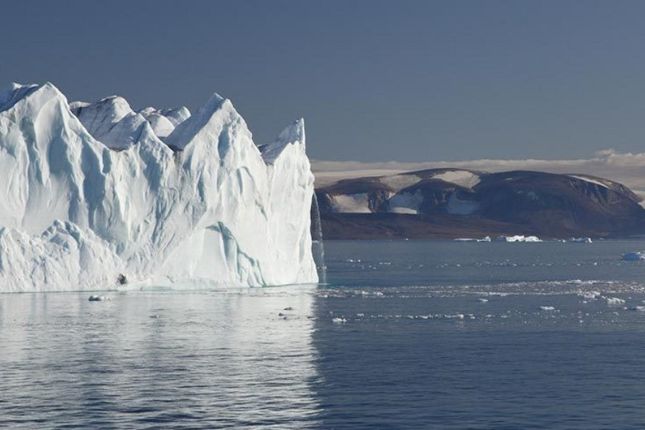Storm Daniel, which has already deluged Greece, Bulgaria and Turkey, brought so much rain in such a short period that a usually dry riverbed—a wadi with depths of up to 400 metres—flooded and burst two catchment dams near the city of Derna.
The eastern cities of Al-Bayda, Al-Marj, Tobruk, Takenis, Al-Bayada, Battah and Benghazi—150 miles to the west of Derna—have also been affected.
Tamer Ramadan, head of the International Federation of Red Cross and Red Crescent Societies in Libya, confirmed the figure of 10,000 people missing so far and told the media, “The death toll is huge.” The interior ministry of Libya’s eastern-based administration announced 5,000 deaths late Tuesday evening. The toll already exceeds that of the worst North African flood of the last century, in Algeria in 1927.
A Derna resident told the Al-Hurra news channel, “When the dam collapsed, the water was released like an atomic bomb, and eight bridges and residential buildings collapsed completely.” Others described the water hitting like a “tsunami”, reaching as high as 10 feet. Photos of the aftermath show scenes resembling a warzone.
Reports say one quarter of Derna, home to well over 100,000 people, has been totally swept away. Roughly 700 dead have already been taken to a local cemetery to be identified. Many will never be found. A spokesperson for the Libyan National Army which controls the area said, “The flowing water carried away entire neighbourhoods, eventually depositing them into the sea.”
Minister of Civil Aviation Hichem Chkiouat told Reuters, “Bodies are lying everywhere—in the sea, in the valleys, under the buildings.”
Survivors are caught in a humanitarian disaster. CNN reported the comments of ambulance and emergency spokesperson Osama Aly hours after the event that “hospitals in Derna are no longer operable and the morgues are full.”
A doctor at the scene told the network, “There are no first-hand emergency services. People are working at the moment to collect the rotting bodies.” An ambulance worker said similarly in an interview with Libyan TV station Al-Masar, “We have nothing to save people... no machines... we are asking for urgent help.”
Phone lines and internet access are down, and access to the city heavily obstructed by the damage and debris.
Warnings had been made that the dams were poorly maintained and needed reconstructing. Just last year, hydrologist Abdelwanees A. R. Ashoor of Libya’s Omar Al-Mukhtar University cited five floods in the region since 1949, predicting flooding on a similar scale to that seen in 1959 would be “likely to cause one of the two dams to collapse.”
He concluded, “If a huge flood happens the result will be catastrophic for the people of the wadi and the city.”
Aly told CNN, “The weather conditions were not studied well, the seawater levels and rainfall [were not studied], the wind speeds, there was no evacuation of families that could be in the path of the storm and in valleys.”
The Guardian notes “conflicting reports as to whether requests had been made to evacuate the city at the weekend, and if so why the plan was rejected.”
But primary responsibility for the disaster lies with the NATO imperialist powers whose 2011 war for resources and geostrategic position against the government of Muammar Gaddafi obliterated the country.
One of the richest and most developed countries in Africa in 2010, a third of Libya’s population now lives below the poverty line. Its GDP per capita is half what it was on the eve of the war. Critical infrastructure was left in ruins. Out of a population of 6.7 million, nearly 900,000 are now in need of humanitarian assistance.
Besides dropping over 7,000 bombs and missiles, NATO’s intervention relied on proxy Islamist forces. The social and political chaos created by their toppling of the government, and lynch murder of Gaddafi, has left Libya a fractured, dysfunctional state.
The west of the country is ruled from Tripoli by the Government of National Unity under Prime Minister Abdul Hamid Dbeibeh, while the east is ruled from Sirte by the rival Government of National Stability under Prime Minister Osama Hammad, backed by Khalifa Haftar’s Libyan National Army. The two power blocs, and the various factions within them, are variously courted and manipulated by foreign powers.
Practically nothing has been provided to rebuild Libya. A report by digital news organisation Middle East Eye in 2015 drew attention to the fact that Britain had spent £320 million bombing the country, versus £15 million on humanitarian aid in the four years afterwards. The European powers treat Libya as a wild west frontier, hiring vicious gangs of “coastguards” to intercept refugees and prevent their entry to “Fortress Europe”.
What money goes into the country is spent in pursuit of its vast oil and gas wealth. Last November, Libya’s National Oil Corporation granted British Petroleum and Italian firm Eni the right to drill in the west of the country and off its north-east shore, close to the flooded area—an $8 billion project.
The crimes of US imperialism and its allies have left the working class and rural poor in Libya especially exposed to the global climate change crisis.
Vast quantities of water fell over Sunday and Monday: 16 inches in 24 hours in Bayda, which receives just over 21 inches in an average year. The central driving force behind the storm was the warming of the Mediterranean Sea, fuelling higher windspeeds and heavier rainfall in a storm known as a “medicane”, or Mediterranean hurricane.
“The warmer water does not only fuel those storms in terms of rainfall intensity,” said Karsten Haustein, a climate scientist and meteorologist at Leipzig University in Germany, “it also makes them more ferocious.”
Suzanne Gray from the meteorology department at Britain’s University of Reading noted, “There is consistent evidence that the frequency of medicanes decreases with climate warming, but the strongest medicanes become stronger.”
An additional factor in this case is an “omega block” pattern of pressure over Europe, with a region of high pressure and temperatures centred on the UK and north-western Europe sandwiched between two cut-off areas of low pressure over Spain and south-eastern Europe, Turkey and north-east Africa—associated with heavy rainfall. The phenomenon has been caused by the jet stream weakening and shifting a long way north, also associated with the impacts of climate change.
Libya’s floods come just days after the United Nations released its “global stocktake” report—the most extensive existing analysis of climate action undertaken by the world’s capitalist governments.
In the usual muted scientific language, the report details a runaway catastrophe. On the current trajectory, the world economy will produce roughly 22 billion tons more carbon dioxide in 2030 than is consistent with limiting global warming to 1.5 degrees Celsius—equivalent to the combined output of the world’s top five polluters, China, US, India, Russia and Japan.
The many unprecedented environmental disasters of the last year have taken place in the context of 1.18 degrees Celsius of warming.
While the report’s authors insist on the need for “phasing out all unabated fossil fuels,” a record $7 trillion was spent on fossil fuel subsidies in 2022, according to the International Monetary Fund. This is roughly 12 times the estimated amount needed to fund climate adaptation measures in Africa over the next decade.
The thousands dead in Libya testify to the sociocidal character of a capitalist system in its death agony. Far from addressing the global threat of climate change, all the imperialist powers can provide is poverty and war.
Photo: A general view of the city of Derna is seen on Tuesday, Sept. 12., 2023. Mediterranean storm Daniel caused devastating floods in Libya that broke dams and swept away entire neighborhoods in multiple coastal towns, the destruction appeared greatest in Derna city © AP Photo / Jamal Alkomaty.
Source: World Socialist Web Site.
